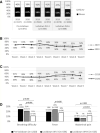Changing patterns of emergency paediatric presentations during the first wave of COVID-19: learning for the second wave from a UK tertiary emergency department
- PMID: 34192192
- PMCID: PMC7969761
- DOI: 10.1136/bmjpo-2020-000967
Changing patterns of emergency paediatric presentations during the first wave of COVID-19: learning for the second wave from a UK tertiary emergency department
Abstract
Background: The SARS-CoV-2 pandemic and initial public health response led to significant changes in health service delivery, access and utilisation. However, SARS-CoV-2 illness burden in children and young people (CYP) is low. To inform effective child public health interventions, we aimed to compare patterns of paediatric emergency department presentation during the initial pandemic response with a previous non-pandemic period.
Methods: Retrospective review of attendances (0-18 years) over the initial pandemic (2 March 2020-3 May 2020) compared with 2019. Outcome measures included number of attendances, referral source, presenting complaint, discharge diagnosis and disposal. Descriptive statistics with subgroup analysis by age/sex/ethnicity and pandemic time periods (pre-lockdown, lockdown weeks 1-3 and lockdown weeks 4-6) was performed.
Results: 4417 attendances (57% illness and 43% injuries) occurred, compared with 8813 (57% illness and 43% injuries), a reduction of 50%, maximal in lockdown week 2 (-73%). Ranking of top three illness presentations changed across the pandemic weeks. Breathing difficulty dropped from first (300, 25%) to second (117, 21%) to third (59, 11%) (p<0.001). Abdominal pain rose from the third pre-lockdown (87, 7%) and lockdown weeks 1-3 (37, 7%) to second in weeks 4-6 (62, 12%; p=0.004). Fever ranked second (235, 19%) in pre-lockdown and first in weeks 1-3 (134, 24%) and weeks 4-6 (94, 18%; p=0.035).
Conclusions: Despite a 50% reduction, there was no significant change in acuity of illness. Rank of illness presentations changed, with abdominal pain ranking second and fever first, an important change from previous, which should prompt further research into causes. CYP-specific public health messaging and guidance for primary care are required in this second wave to ensure access to appropriate emergency services.
Keywords: COVID-19; epidemiology; health services research.
© Author(s) (or their employer(s)) 2021. Re-use permitted under CC BY-NC. No commercial re-use. See rights and permissions. Published by BMJ.
Conflict of interest statement
Competing interests: There are no competing interests.
Figures



References
-
- National Health Service . A&E attendances and emergency admissions. Available: https://www.england.nhs.uk/statistics/statistical-work-areas/aewaiting-t... [Accessed 11 Jun 2020].
MeSH terms
LinkOut - more resources
Full Text Sources
Medical
Miscellaneous
